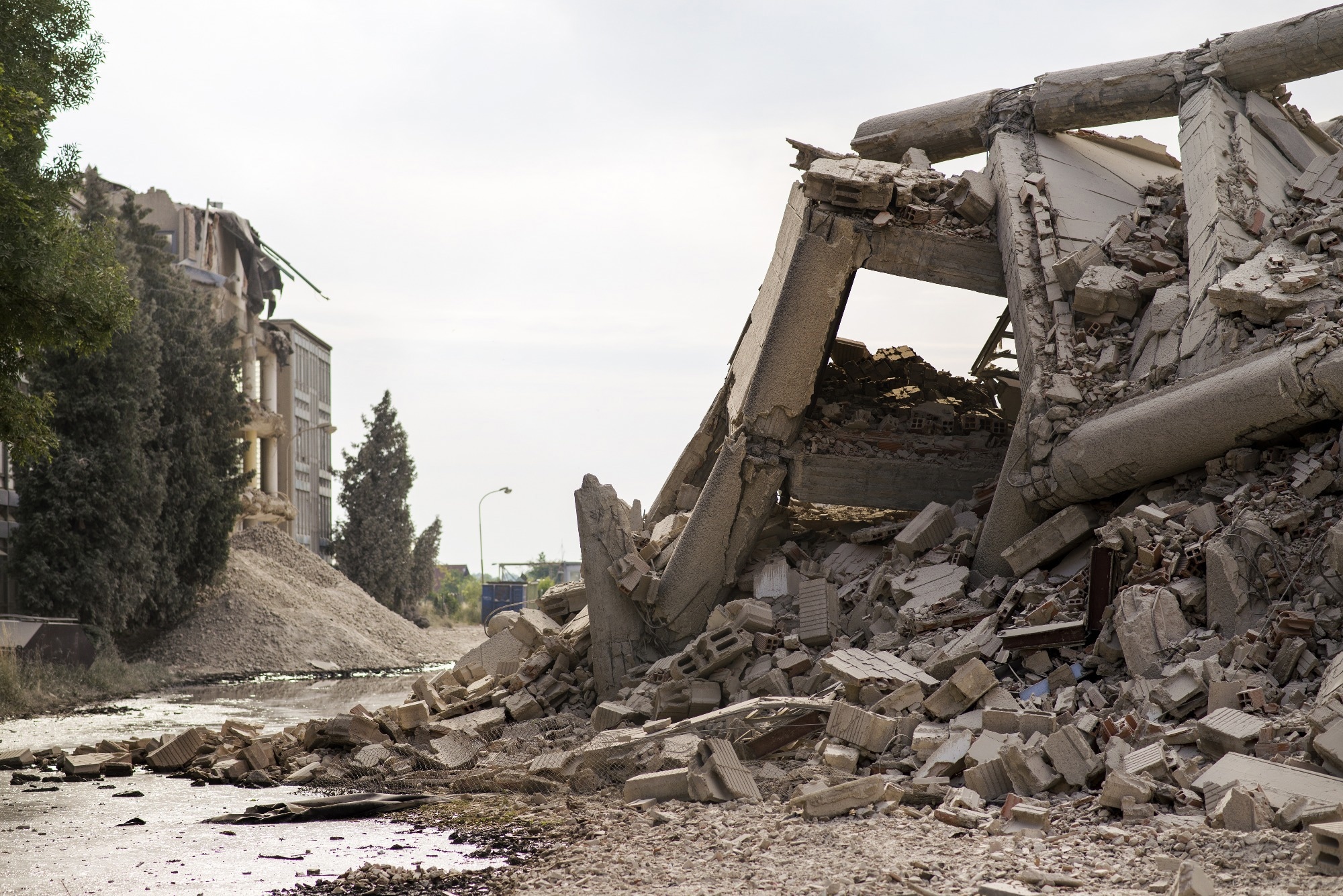In a recent article published in the journal Results in Engineering, researchers presented a machine learning-based innovative approach for assessing seismic structural damage of moment-resisting frame buildings/structures. They employed K-nearest neighbors (KNN) and linear regression to correctly replicate/simulate the Park-Ang structural damage index.
 Study: Machine Learning Revolutionizes Seismic Damage Assessment. Image Credit: Mgr. Nobody/Shutterstock
Study: Machine Learning Revolutionizes Seismic Damage Assessment. Image Credit: Mgr. Nobody/Shutterstock
Background
Earthquake damage is a significant concern for civil engineers and society in general. Designing buildings that can withstand seismic forces and minimize damage is a major challenge. Traditional methods, such as the equivalent static force and response spectrum methods, have limitations in capturing the complex, nonlinear behavior of structures during earthquakes. Nonlinear dynamic analysis is more accurate but is also complex, time-consuming, and requires advanced computational tools.
Machine learning algorithms are emerging as powerful tools in structural engineering. They learn from data and make predictions based on patterns applicable to fragility analysis, natural period estimation, and seismic performance assessment. However, challenges remain, such as data availability, quality, representation, model selection, validation, and interpretation.
About the Research
In this paper, the authors showcased an innovative methodology for estimating structural damage utilizing machine learning models trained on data acquired from a newly developed, numerically efficient simulation procedure. They focused on moment-resisting frame structures, commonly used in civil engineering, considering both regular and irregular geometry models with varying dimensions, characteristics, and capacities. They also included different seismic inputs from real-world earthquake recordings in Vrancea, Romania.
The study involved two main steps: generating the dataset and developing the machine learning algorithms. The dataset was created using a new simulation procedure based on the force analogy method (FAM), which is a fast and accurate method for simulating the nonlinear dynamic response of structures.
FAM uses a vector of unknowns to account for inelastic displacements, keeping the stiffness matrix constant throughout the analysis. It also employs an explicit integration scheme and a plastic hinge model to capture the nonlinear behavior of structural elements. The dataset includes information about structural models, seismic inputs, and structural responses, expressed by the Park-Ang damage index, a widely used indicator of structural damage.
The machine learning algorithms, including linear regression and KNN, were trained and tested on the dataset using different sets of features as input parameters. Linear regression estimates a dependent variable based on an independent variable, assuming a linear relationship.
KNN, a more complex and flexible method, estimates a dependent variable based on the similarity of independent variables with the nearest neighbors in the dataset. Feature selection was performed to evaluate the importance and impact of each feature on the damage index estimation. The performance of the algorithms was evaluated using two metrics: the coefficient of determination (R²) and the mean absolute error (MAE).
Research Findings
The outcomes demonstrated that the machine learning approach can successfully estimate the structural damage index based on a limited set of input parameters. The authors found that the KNN algorithm outperformed the linear regression algorithm in terms of accuracy and reliability. Specifically, the KNN algorithm achieved an R² score of 0.83 and an MAE of 0.08 using nine features as input parameters. When using only two features, the KNN algorithm still performed reasonably well, achieving an R² score of 0.58 and an MAE of 0.17.
Additionally, the study identified the most important features for damage index estimation: the peak ground accelerations of the seismic inputs, the building height, the dimensions and bending capacities of the columns, and the main natural periods of the building. These features were crucial for accurately predicting the structural damage index.
Conclusion and Future Scope
In summary, the paper introduced a novel and practical tool for structural engineers and practitioners to evaluate the seismic performance of structures using a simplified and reliable approach. It provided valuable insights and guidance for selecting appropriate features and machine learning algorithms for damage index estimation.
The study demonstrated that machine learning algorithms can accurately estimate the structural damage index using a limited set of input parameters related to the structural model and seismic excitation. Furthermore, the methodology could be extended to other types of structures, seismic inputs, damage indicators, and various other structural engineering problems.
The researchers acknowledged limitations and challenges, such as the dataset potentially not capturing all the variations and complexities encountered in real-world structures and seismic scenarios. This could affect the accuracy, generalizability, and interpretability of the algorithms. They recommended exploring alternative algorithms like artificial neural networks (ANNs) or support vector machines (SVMs) for potentially improved performance and robustness in future work. Additionally, they highlighted the importance of collecting more real data from field observations and experiments to validate and enhance the models.
Journal reference:
- Calofir, V., Munteanu, R, I., Simoiu, M, S., Lemnaru, K, C. Innovative approach to estimate structural damage using linear regression and K-nearest neighbors machine learning algorithms. Results in Engineering 22, 102250 (2024). https://doi.org/10.1016/j.rineng.2024.102250, https://www.sciencedirect.com/science/article/pii/S259012302400505X?dgcid=api_sd_search-api-endpoint